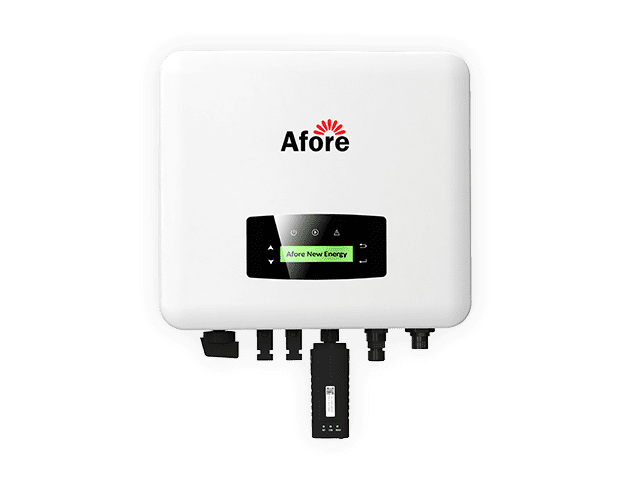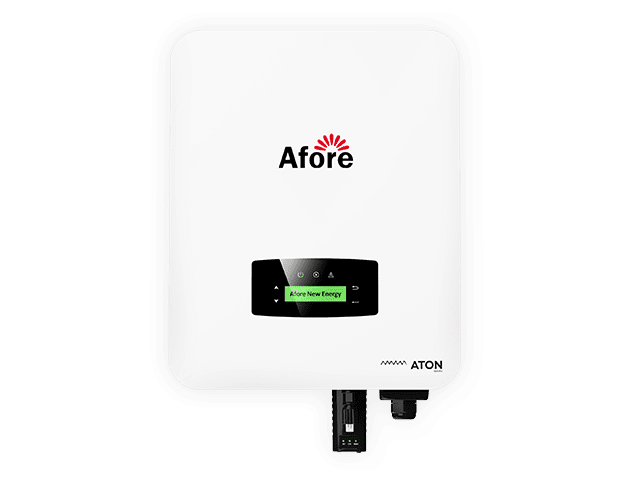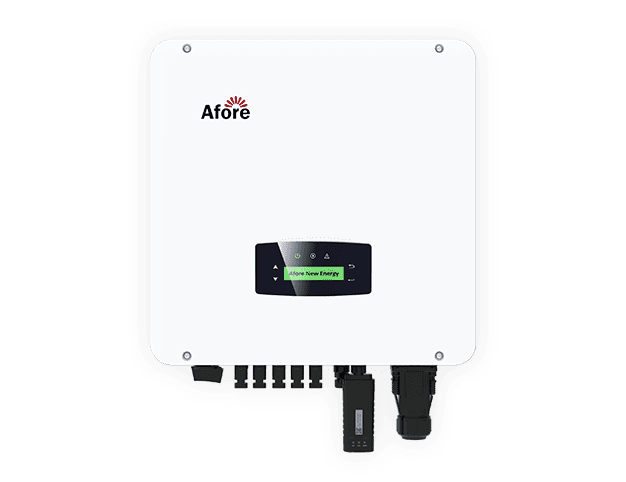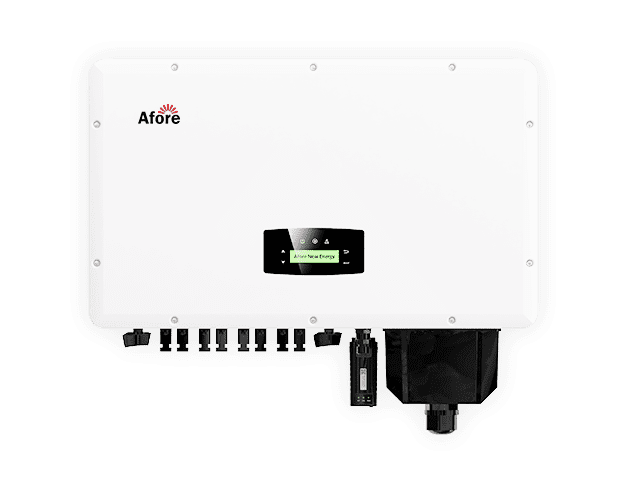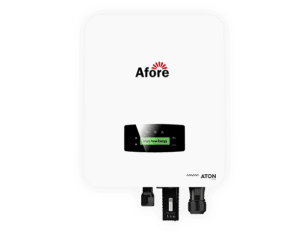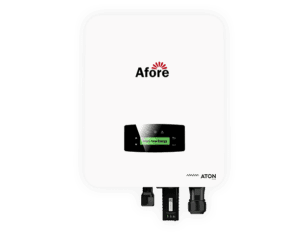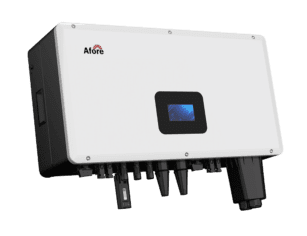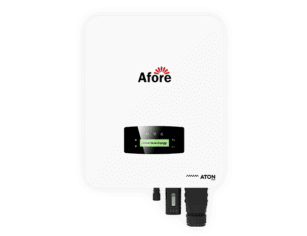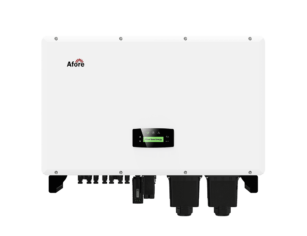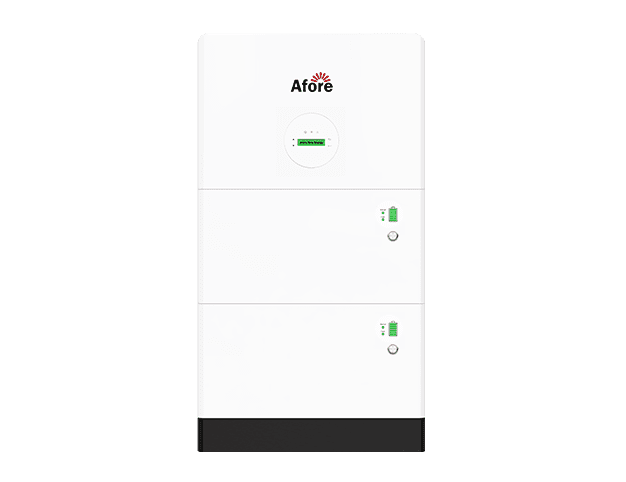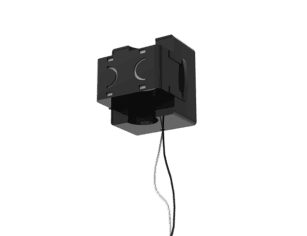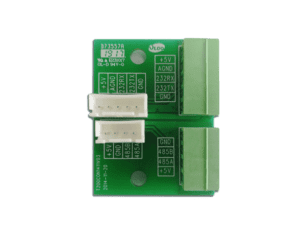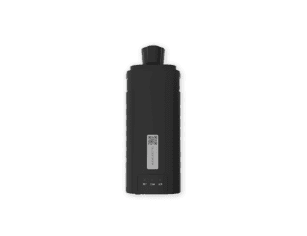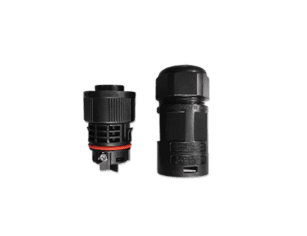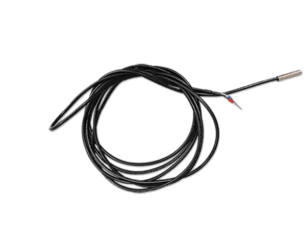Maximize Efficiency with a Powerful Energy Storage System for Homes

Índice
In today’s evolving energy landscape, the concept of an energy storage system is no longer niche — it’s a central piece of how households and utilities are unlocking the full potential of solar power. Whether you have rooftop panels, an off-grid cabin, or are simply curious about how a home solar installation can be future-proofed, understanding the role of an energy storage system (ESS) is key. In this article, I’ll walk you through what an energy storage system is, how it works together with a solar inverter, how to size and implement one, and whether it’s worth it — all based on credible research and years of industry experience.
What is an Energy Storage System?
An Energy Storage System (ESS) is a technology designed to store energy for later use. These systems play a crucial role in balancing energy production and consumption, ensuring a reliable and consistent supply of electricity. As renewable energy sources, such as solar and wind, become more integrated into the energy grid, ESS provides a means to manage the intermittent nature of these energy sources, offering solutions for both grid stability and energy independence for residential homes.
Definition and Core Components
An Energy Storage System (ESS) primarily consists of three key components:
- Energy Storage Medium: This is the material or substance used to store energy, such as batteries, pumped hydro, or compressed air.
- Inverter: This device converts stored DC (direct current) electricity into AC (alternating current) electricity, which is used by most home appliances and integrated into the electrical grid.
- Control System: The control system monitors the ESS’s performance, ensuring that the energy is stored, managed, and distributed efficiently. It also regulates the charging and discharging cycles.
In residential applications, the most common form of energy storage is lithium-ion batteries, although other technologies, such as lead-acid batteries and flow batteries, are also used in certain cases.
How it Works with Solar Generation and the Grid
An energy storage system works seamlessly with solar generation by storing excess solar power produced during the day. Typically, solar panels generate more energy than a household requires during peak sunlight hours. The ESS captures this surplus energy, storing it for later use, such as during the evening when solar power is not available.
- Solar Panels and ESS Interaction: During the day, when solar panels are generating electricity, the system first meets the home’s immediate energy needs. The remaining power is stored in the energy storage system.
- Grid Integration: If the ESS is connected to the grid, any excess energy not stored can be fed back into the grid, potentially earning the homeowner credits or compensation, depending on local energy policies (often referred to as net metering).
- Discharging Energy: At night or during cloudy days, when solar generation is insufficient, the ESS discharges the stored energy to power the home. If the stored energy is depleted, the system automatically draws power from the grid, ensuring there is no disruption to electricity supply.
This synergy between solar generation, ESS, and the grid enhances energy resilience, reduces reliance on grid power, and provides a more stable and sustainable energy supply.
Types of Storage Technologies (With a Focus on Residential)
There are several types of energy storage technologies, but for residential applications, the following are the most common:
- Lithium-Ion Batteries:
- How it works: Lithium-ion batteries store energy through a chemical reaction that occurs during charging and discharging. These batteries are known for their high energy density, long lifespan, and efficiency.
- Why it’s popular: Due to their compact size, high efficiency, and ability to cycle many times without significant degradation, lithium-ion batteries are the most commonly used storage solution for homes. They are particularly effective when paired with solar panels for off-grid energy storage or as backup power.
- Lead-Acid Batteries:
- How it works: Lead-acid batteries use a chemical reaction between lead plates and sulfuric acid to store and release energy.
- Why it’s less common: Although cheaper upfront, lead-acid batteries are heavier, have a shorter lifespan, and are less efficient than lithium-ion batteries. They may still be suitable for less frequent use, such as in backup power applications.
- Flow Batteries:
- How it works: Flow batteries use two electrolytes stored in external tanks and a chemical reaction within the battery to store and release energy.
- Why it’s emerging: Flow batteries are gaining attention for their scalability, longer lifespan, and ability to be recharged indefinitely without loss of capacity. However, they are not yet as widely used in residential settings due to higher costs and complexity.
- Sodium-Ion Batteries:
- How it works: Sodium-ion batteries operate similarly to lithium-ion but use sodium instead of lithium as the charge carrier. These batteries are still in development but hold promise for more sustainable energy storage.
- Why it’s a potential option: While sodium-ion batteries may be less efficient and have lower energy density than lithium-ion batteries, they could be a more affordable and eco-friendly alternative in the future.
- Pumped Hydro Storage (typically not residential but can be used in large-scale applications):
- How it works: Pumped hydro storage involves moving water between two reservoirs at different elevations. Energy is stored when water is pumped to a higher elevation and released through turbines to generate power when needed.
- Why it’s used in large systems: Although it’s an effective form of energy storage for large-scale grid applications, pumped hydro requires significant land and infrastructure, making it unsuitable for residential use.

Why Pair Solar With an Energy Storage System?
Pairing solar energy with an Energy Storage System (ESS) is a smart choice for homeowners seeking to maximize their energy savings and efficiency. Solar power alone, while a sustainable and renewable source, has one key limitation: intermittency. The sun doesn’t always shine, especially during cloudy days, at night, or during peak demand periods. By integrating an energy storage system, homeowners can harness the full potential of their solar investment, ensuring they have access to reliable energy when it’s needed most.
Addressing Intermittency of Solar Power
One of the biggest challenges with solar energy is its intermittency. Solar panels only generate electricity when the sun is shining, which means that energy production is not constant. During cloudy days or at night, solar panels produce little to no electricity, leading to reliance on the grid or other energy sources.
Energy Storage Systems (ESS) effectively solve this problem by storing the excess energy produced during peak sunlight hours. The stored energy can then be used during periods when solar generation is low or absent, such as at night or on overcast days.
- Maximizing Solar Energy Utilization: Without an ESS, homeowners would either need to draw power from the grid or waste the excess solar energy produced. With a storage system, every watt generated by the solar panels can be put to good use.
- Smoothing Energy Supply: Energy storage smooths out the energy flow, reducing gaps in solar power generation and ensuring that power is always available for home use.
By pairing solar panels with an ESS, homeowners can optimize the amount of energy harvested from their solar system, ensuring consistent power even when sunlight isn’t available.
Enhancing Grid Integration, Reliability & Resilience
The integration of an Energy Storage System with solar power not only benefits individual homes but also plays a vital role in improving the overall reliability and resilience of the electrical grid. Here’s how:
- Grid Stability: When homes are equipped with energy storage systems, excess solar energy generated during the day can be stored and fed back into the grid, helping to balance supply and demand. This reduces strain on the grid during peak consumption periods and enhances grid stability, especially in regions with high solar adoption.
- Energy Security: ESS enhances energy security by providing homes with backup power during grid outages or natural disasters. With a properly sized ESS, a home can continue operating its essential systems (lights, refrigerator, medical equipment) without interruption, even when the local utility grid is down.
- Grid Decentralization: Solar paired with storage is an effective way to promote the decentralization of power generation. As more homes and businesses adopt solar energy systems with ESS, the grid becomes less reliant on centralized power plants. This can lead to a more resilient and sustainable energy infrastructure.
The combination of solar and energy storage not only helps homeowners become less dependent on the grid but also contributes to the overall health and resilience of the broader electrical grid.
Home Benefits: Cost Savings, Self-Consumption, Backup Power
The pairing of solar power with an Energy Storage System offers numerous direct benefits to homeowners, making it an attractive investment for those looking to reduce their energy costs and increase energy independence.
Ahorro de costes
By storing excess solar energy, homeowners can reduce their reliance on grid power during high-demand periods, when electricity prices are typically higher. This leads to significant savings on electricity bills, especially if the home is located in an area with time-of-use (TOU) pricing or where electricity rates fluctuate throughout the day.
Furthermore, many regions offer incentives or rebates for solar installations, making the upfront costs of the solar-plus-storage system more affordable. Over time, these savings on electricity bills can offset the initial investment, leading to a favorable return on investment (ROI).
Self-Consumption
One of the most significant advantages of pairing solar with storage is the ability to increase self-consumption. Rather than sending excess energy back to the grid, homeowners can store it for personal use. This ensures that a larger percentage of the electricity generated by their solar panels is consumed on-site, reducing the need to purchase grid electricity.
Higher self-consumption leads to greater energy independence, as homeowners can meet most or all of their electricity needs with solar and stored energy, minimizing exposure to rising electricity rates and reducing reliance on external energy sources.
Backup Power
An Energy Storage System paired with solar provides the ultimate peace of mind: backup power during power outages. Whether it’s due to a storm, high winds, or any other natural disaster, ESS ensures that your home will continue to operate even when the grid is down. With an energy storage system, you won’t need to worry about food spoilage, the loss of heating or cooling, or the inability to charge devices during an emergency.
Depending on the size of the ESS, homeowners can choose to power critical appliances like refrigerators, lights, medical equipment, and home security systems, ensuring that their home remains functional and safe during unexpected power disruptions.

Key Components and How They Fit Together
An Energy Storage System (ESS) is made up of several key components that work together to store, manage, and distribute energy efficiently. When paired with solar power, these components ensure that solar energy is used to its full potential, enhancing energy self-sufficiency, cost savings, and overall system performance. Understanding how these parts work in harmony is essential for anyone considering a solar-plus-storage solution.
1. Solar Panels: The Primary Energy Source
At the core of a solar energy system are solar panels, which capture sunlight and convert it into electricity through the photovoltaic (PV) process. Solar panels generate direct current (DC) electricity, which is then fed into the system for either direct consumption or storage.
- How it fits in: Solar panels are the first step in the energy generation process. During daylight hours, they produce electricity, often exceeding a household’s immediate energy needs. This surplus energy is stored in the energy storage system, ensuring that it can be used during periods when the sun isn’t shining.
2. Inverter: Converting DC to AC
Solar panels generate direct current (DC) electricity, but most home appliances use alternating current (AC). This is where the solar inverter plays a vital role.
- How it fits in: The inverter is responsible for converting the DC electricity produced by the solar panels into AC electricity, which can be used to power lights, appliances, and other devices within the home. It also ensures that the energy being sent to the grid (if the system is grid-tied) is compatible with the electrical grid’s AC power.
- Advanced Inverters: Modern inverters often have additional functionalities, such as enabling smart grid integration, monitoring system performance, and maximizing the efficiency of the solar energy production. Some inverters also manage the charging and discharging of the energy storage system, optimizing the entire system’s performance.
3. Energy Storage System (ESS): Storing Excess Energy
The Energy Storage System (ESS) is where the surplus solar energy is stored for later use. Most commonly, ESS for residential systems use lithium-ion batteries, although other technologies, such as lead-acid or flow batteries, may also be used.
- How it fits in: When the solar panels generate more electricity than the home needs, the excess energy is sent to the ESS for storage. The ESS stores the energy as DC electricity. When the home needs power, the ESS discharges this stored energy, typically converting it back into AC via the inverter for use in the home.
- Battery Management: The ESS also includes a battery management system (BMS) that monitors and controls the charging and discharging cycles to ensure the battery operates within its optimal parameters, increasing its lifespan and efficiency.
4. Battery Management System (BMS): Ensuring Efficiency and Longevity
The Battery Management System (BMS) is a critical component that manages the flow of electricity in and out of the energy storage system. It ensures that the batteries operate safely and efficiently, optimizing their performance and lifespan.
- How it fits in: The BMS monitors factors like battery temperature, charge levels, and voltage, ensuring the system stays within safe operating conditions. It also communicates with the inverter and other system components to coordinate when the ESS should charge or discharge based on the home’s energy needs and solar energy production.
5. Charge Controller: Regulating Power Flow
In some solar-plus-storage systems, a charge controller may be used to regulate the power flow between the solar panels and the ESS. This component ensures that the batteries are not overcharged or discharged too quickly, both of which can damage the battery over time.
- How it fits in: The charge controller acts as a mediator between the solar panels and the energy storage system. It ensures that the energy stored in the battery is carefully controlled and that the battery is charged in an optimal way to maintain longevity and performance.
6. Control System: Monitoring and Managing Energy Use
An energy management system (EMS) or control system is typically integrated into solar-plus-storage systems to provide oversight and control. This system helps manage the distribution of power from solar, storage, and the grid, ensuring that the right amount of energy is used at the right time.
- How it fits in: The EMS communicates with all the key components—solar panels, inverter, ESS, and grid—to optimize energy usage based on factors like energy consumption patterns, solar generation forecasts, and time-of-use rates. Some systems allow homeowners to control their energy settings remotely via apps, making it easier to monitor system performance and adjust settings for maximum efficiency.
7. Grid Connection: Feeding Excess Power Back to the Grid
For grid-tied systems, the grid connection is an essential component. It allows homeowners to send excess energy back to the grid during times of overproduction, potentially earning credits or compensation through net metering programs.
- How it fits in: When the energy storage system is full and the home’s energy needs are met, the inverter can send excess power generated by the solar panels back to the grid. This process helps maintain grid stability and can offset costs, particularly in areas where homeowners can sell excess solar energy to the grid.
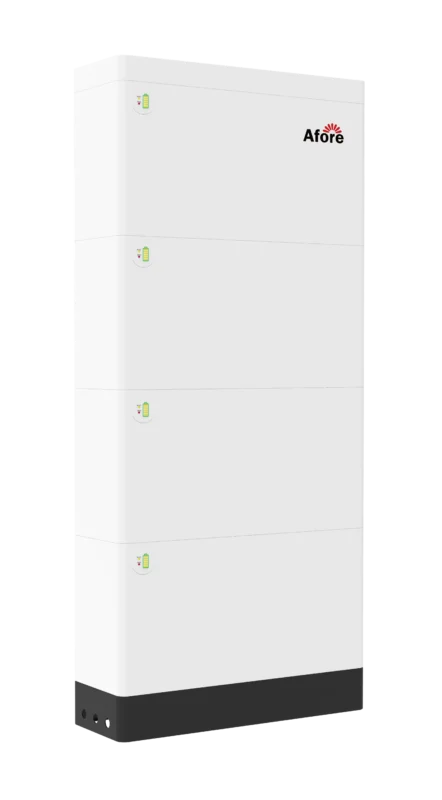
Sizing an Energy Storage System for Your Home
When considering an Energy Storage System (ESS) for your home, it’s crucial to properly size the system to meet your energy needs without overinvesting in unnecessary capacity. The right size will depend on several factors, including your energy consumption patterns, the size of your solar panel system, your energy storage goals (backup power vs. self-consumption), and local energy rates. Understanding how to properly size an ESS ensures that you get the most value out of your system while avoiding the costs of over-sizing or under-sizing.
1. Understanding Your Energy Usage
The first step in sizing an Energy Storage System is to assess your home’s energy consumption. By understanding your energy usage patterns, you can determine how much power you need to store for times when solar energy is not being generated.
- Review Your Electric Bill: Your electricity bill will show the total amount of energy consumed over a billing period (usually in kilowatt-hours or kWh). Look at your monthly usage trends to get an average figure for your household’s needs.
- Peak vs. Off-Peak Usage: Understanding peak demand times (when your energy usage is highest) and off-peak times (when energy use is lower) will help you determine when the energy storage system should discharge and how much storage is needed for these peak hours.
- Essential vs. Non-Essential Loads: Identify which appliances and systems are critical to keep running in case of a power outage (e.g., refrigerator, lights, heating/cooling). Your ESS should be sized to support these critical loads during outages or low solar production periods.
2. Sizing Based on Solar Panel System Capacity
Your solar panel system’s size is closely related to the size of your energy storage system. The goal is to ensure that your solar system generates enough energy to meet both your consumption and the energy required to fill your ESS during peak sunlight hours.
- Solar Generation vs. Consumption: If your solar panels generate more electricity than you consume during the day, the excess can be stored in your ESS. A good rule of thumb is to size your ESS so that it can store enough energy to meet your needs during the evening or on cloudy days.
- Ideal Storage Capacity: To determine the appropriate battery size, calculate how much energy you typically use in a 24-hour period. Then, estimate how much of that energy could be supplied by solar power and how much will need to be stored for use after sunset or during periods of low solar output.
For example, if your home consumes 30 kWh of energy per day, and your solar system generates an average of 25 kWh per day, you’ll need an ESS that can store 5-10 kWh to cover the energy shortfall during non-sunny periods.
3. Backup Power vs. Full Self-Sufficiency
There are two main goals when sizing an energy storage system for your home: backup power and full self-sufficiency.
- Backup Power: If you are mainly interested in backup power during outages, you’ll need to size your ESS to cover critical loads, such as lighting, refrigeration, medical devices, and heating/cooling. In this case, you won’t need to store enough energy to cover all household appliances; rather, focus on storing energy for essential systems only.
- Full Self-Sufficiency: If your goal is to use solar power for as much of your home’s energy needs as possible (including during the night or on cloudy days), you’ll need to size your ESS to store enough energy to cover your entire household’s daily consumption. This will likely require a larger battery bank.
4. Assessing Your Energy Storage Goals
Your specific energy storage goals will influence the size of your ESS:
- Self-Consumption Optimization: If you’re interested in using more of the energy your solar panels produce rather than feeding it back into the grid, your ESS should be sized to store the amount of surplus energy generated during the day. This allows you to maximize the use of your solar energy and minimize reliance on the grid.
- Emergency Backup: For homes located in areas with frequent power outages, the ESS should be sized to provide enough power for an extended period of time during grid failures. Depending on how long you want the system to provide backup power, you’ll need to account for the total amount of critical power needed and how long you want it to last (e.g., 12 hours, 24 hours, etc.).
- Grid Independence: If you want to minimize your reliance on the grid, you will need a larger ESS that can store enough energy to cover your household’s needs even during extended cloudy periods or at night, without drawing power from the grid.
5. Battery Storage Capacity and Efficiency
Battery storage is typically rated in kilowatt-hours (kWh), which is a measure of energy capacity. For a more accurate sizing, you also need to consider the depth of discharge (DoD) and the round-trip efficiency of the battery.
- Depth of Discharge (DoD): This refers to how much of the battery’s capacity can be used before recharging. For example, a battery with a 70% DoD can discharge 70% of its total capacity before it needs to be recharged. Most modern lithium-ion batteries have a DoD of 80-90%, meaning you can use most of the stored energy.
- Round-Trip Efficiency: This measures how much of the energy that is stored in the battery can be recovered when needed. High-efficiency systems (typically around 90% or higher) will deliver more usable power per unit of energy stored.
When sizing your ESS, make sure to account for both of these factors to ensure you’re getting the most efficient storage capacity for your energy needs.
6. Local Energy Rates and Incentives
Finally, consider the local energy rates and incentives available in your area. Many regions have time-of-use (TOU) electricity pricing, where electricity rates are higher during peak hours and lower during off-peak times. If you’re in such an area, it might make sense to size your ESS to store enough energy to avoid using grid power during expensive peak times.
Additionally, many regions offer financial incentives (such as rebates or tax credits) for residential solar installations and energy storage systems. These incentives can reduce the upfront costs of your system and may influence the optimal system size for your budget.

Costs, Return on Investment & Financial Considerations
When considering an Energy Storage System (ESS) for your home, one of the most important factors to evaluate is the cost—not just the initial investment but also the long-term savings and return on investment (ROI). Solar-plus-storage systems can be a significant upfront expense, but the right system can lead to considerable financial benefits over time, including reduced energy bills, energy independence, and potential incentives. This section will explore the costs involved, how to assess ROI, and the financial considerations to keep in mind before committing to an ESS.
1. Initial Costs of Solar + Energy Storage System
The upfront costs of installing a solar energy system combined with an Energy Storage System (ESS) can vary significantly depending on the size of the system, the type of technology used, and local installation rates. The components that contribute to the overall cost include:
- Solar Panel System: The cost of solar panels is typically measured in terms of installed cost per watt (USD per watt). This can vary based on the quality of panels and whether the system is a grid-tied or off-grid configuration. Typically, the average cost per watt ranges from $2.50 to $3.50 in many areas.
- Energy Storage System (ESS): The price of batteries (usually lithium-ion) has decreased significantly over the past decade but can still represent a major part of the total cost. On average, homeowners can expect to pay anywhere from $300 to $500 per kWh of storage capacity. The cost will depend on the size of the battery bank needed to meet your home’s energy needs.
- Inverter and Other Equipment: The inverter, along with the necessary electrical infrastructure, will also contribute to the overall cost. For a typical solar-plus-storage system, the inverter cost can range from $1,000 to $2,500, depending on the capacity.
- Installation: Installation costs are an important consideration, as labor charges vary by region and the complexity of the system. The installation costs for a solar-plus-storage system can range from $3,000 to $8,000 or more.
In total, the cost of installing a solar and energy storage system for an average home can range between $15,000 to $30,000 or more, depending on system size, technology, and location.
2. Incentivos, créditos fiscales y descuentos
Many regions offer financial incentives that can substantially lower the initial cost of a solar-plus-storage system. These incentives are designed to make renewable energy more affordable and help homeowners reduce the payback period for their investment. Key incentives to look for include:
- Federal Tax Credits: In some countries, such as the United States, the federal government offers investment tax credits (ITC) for solar installations. This can cover up to 26% of the cost of the solar system and energy storage (in 2021, this was set to reduce to 22% in 2023 and further in subsequent years, but could be extended or adjusted depending on policy changes). This credit can significantly reduce the upfront cost of installing solar panels and ESS.
- State and Local Incentives: Depending on your location, state or local governments may offer additional rebates, tax credits, or financial incentives for installing solar and storage systems. These programs can vary greatly from state to state or region to region, so it’s important to research available options.
- Utility Programs: Some utility companies also offer programs to support solar and battery installations, such as rebates, net metering, or performance-based incentives. In some areas, utilities may even allow homeowners to sell excess solar energy back to the grid for compensation, helping to offset installation costs.
- Financing Programs: Various financing options are available, such as solar loans, leasing, or Power Purchase Agreements (PPAs), which can make it easier for homeowners to manage the initial cost without paying all upfront. These options often come with low-interest rates or payment deferrals, making solar storage more accessible to a broader range of consumers.
3. Retorno de la inversión (ROI)
Understanding the return on investment (ROI) is crucial when considering whether to install a solar and energy storage system. The ROI for an ESS depends on several factors, including energy savings, system costs, available incentives, and energy prices in your area.
Here are the key factors that influence ROI:
- Energy Savings: By using stored solar energy during peak periods (when electricity prices are high), you can significantly reduce your reliance on grid power and lower your monthly electricity bills. The greater the difference between your peak electricity rates and solar energy savings, the higher the ROI.
- Time-of-Use (TOU) Rates: In areas with time-of-use pricing, where electricity prices fluctuate based on demand, storing excess solar energy during off-peak hours and using it during peak periods can result in substantial savings. For example, if electricity costs more in the afternoon, storing solar power generated in the morning and using it in the afternoon can result in better savings.
- System Payback Period: The payback period is the length of time it takes for your savings on electricity bills to equal the initial cost of your system. In general, payback periods for solar-plus-storage systems range from 6 to 12 years, though this varies based on factors such as energy consumption, energy costs, system size, and local incentives.
- Energy Independence: For many homeowners, one of the key financial benefits of a solar-plus-storage system is energy independence. By reducing your reliance on the grid, you can protect yourself against rising electricity rates and ensure your energy costs remain predictable over the long term. This can be particularly valuable in regions where electricity prices are volatile.
4. Ongoing Maintenance and Operating Costs
While solar-plus-storage systems generally have low maintenance costs, it’s still important to consider potential expenses over time. Here are some factors to keep in mind:
- Solar Panel Maintenance: Solar panels generally require minimal maintenance. However, cleaning the panels periodically to ensure optimal performance and checking for any shading or damage can help maximize their lifespan and efficiency.
- Battery Maintenance: Batteries, especially lithium-ion batteries, require less maintenance than older technologies, but it’s still important to monitor their performance. Some manufacturers offer warranties of up to 5 years, and the battery management system (BMS) helps ensure the battery remains in good condition.
- Inverter Maintenance: Inverters may need occasional servicing or replacement, especially after the 10-15 year mark, when warranties typically expire.
While there are ongoing costs, they are typically small compared to the savings that come from using stored solar power instead of grid electricity.
5. Long-Term Value and Energy Resilience
In addition to financial considerations, energy resilience is a key factor that can influence the overall value of installing an ESS. Homes equipped with both solar panels and energy storage can be less dependent on the grid during power outages, contributing to energy security and peace of mind.
- Backup Power: In case of grid failures or emergencies, an ESS allows you to continue running essential systems (such as lights, refrigerators, and medical devices) without worrying about interruptions. This is particularly valuable in areas prone to natural disasters or frequent power outages.
- Home Value: Installing a solar and energy storage system can increase the value of your home. Potential buyers may be willing to pay more for homes equipped with renewable energy solutions that offer lower utility bills and greater energy independence.

Pros & Cons of Solar + Energy Storage Systems
When it comes to integrating an Energy Storage System (ESS) with your solar energy setup, it’s important to weigh both the benefits and drawbacks to determine if this solution aligns with your energy goals, budget, and long-term needs. While the combination of solar panels and energy storage systems provides numerous advantages, it may not be the perfect solution for everyone. Below, we explore the pros and cons of solar-plus-storage systems to help you make an informed decision.
Pros of Solar + Energy Storage Systems
Mayor independencia energética
One of the most significant advantages of pairing solar panels with an energy storage system is the increased energy independence it offers. With an ESS, you can store excess solar energy generated during the day and use it when needed, especially during the night or on cloudy days. This reduces reliance on the electrical grid and gives you greater control over your energy usage.
- Benefit: You become less vulnerable to rising energy costs and power outages, as you can rely on stored energy during peak hours or emergencies.
Energía de reserva durante los cortes
A key advantage of a solar-plus-storage system is its ability to provide backup power during power outages. If you live in an area prone to blackouts, a system with energy storage ensures that your home’s essential appliances, such as refrigerators, lights, and medical devices, can continue to run even when the grid goes down.
- Benefit: Solar energy storage systems allow for uninterrupted power, giving homeowners peace of mind during emergencies and reducing reliance on external power sources.
Cost Savings Through Energy Optimization
Solar systems without storage typically feed excess power back into the grid. However, without energy storage, homeowners miss out on the opportunity to use that energy during higher-cost periods, such as in the evening when energy demand and rates are higher.
- Benefit: By storing excess solar energy in an ESS, you can maximize self-consumption. You use your own stored energy instead of buying electricity from the grid during peak times, leading to significant savings on your monthly utility bills.
Reduced Utility Bills
Over time, having an energy storage system can significantly reduce your electricity bills. By charging the ESS with solar energy during the day and discharging it at night, you can minimize your reliance on grid power, especially if your local utility company has time-of-use rates.
- Benefit: Homeowners who are on TOU pricing plans can save money by shifting their energy usage to off-peak times when electricity rates are lower.
Incentives and Tax Benefits
Many regions offer financial incentives, rebates, and tax credits to encourage the adoption of solar energy and energy storage solutions. For example, the Investment Tax Credit (ITC) in some countries can cover a portion of the system’s cost, making the overall installation more affordable.
- Benefit: These incentives can significantly lower the initial investment, shortening the payback period and improving the ROI.
Environmental Impact Reduction
Pairing solar with energy storage creates a cleaner, more sustainable energy solution. By utilizing solar power (a renewable resource) and storing excess energy for later use, you decrease the amount of fossil-fuel-generated electricity needed from the grid.
- Benefit: This contributes to a reduction in your carbon footprint and helps combat climate change by promoting clean energy usage.
Increase in Home Value
Homes with solar systems and energy storage solutions are becoming increasingly desirable in the real estate market. As more homeowners seek energy-efficient homes that reduce energy costs, your solar-plus-storage setup can increase the resale value of your home.
- Benefit: Installing a solar and ESS system can be an attractive selling point, potentially raising the market value of your property.

Cons of Solar + Energy Storage Systems
High Upfront Cost
While the cost of solar panels has decreased over the years, the addition of an energy storage system can still make the total installation cost significant. The price of batteries and associated components (inverters, wiring, etc.) can result in an initial investment ranging from $15,000 to $30,000, or more, depending on the system size and battery capacity.
- Drawback: The high upfront cost may be prohibitive for some homeowners, particularly without access to incentives or financing options.
Maintenance and Monitoring Costs
Though maintenance for solar panels is minimal, an Energy Storage System requires ongoing care and monitoring to ensure optimal performance. Batteries, especially older technologies, may degrade over time, reducing their storage capacity and requiring replacement after 10-15 years.
- Drawback: While lithium-ion batteries are typically low-maintenance, battery replacement can be costly, and the system may require periodic servicing, adding to the overall expense.
Limited Storage Capacity
The size of your energy storage system determines how much excess solar power can be stored and used later. For homeowners with high energy consumption, the storage capacity may not be sufficient to cover all their needs during periods of low solar generation, such as at night or during cloudy days.
- Drawback: If your energy needs exceed the storage capacity, you may still need to rely on grid power during certain times, which reduces the potential savings.
Espacio necesario
Energy storage systems, particularly batteries, require space to be installed. For homeowners with limited space, this could be a concern, as the system may take up valuable room in your garage, basement, or outdoor areas.
- Drawback: Homeowners may need to consider the space needed for the battery and inverter, which could impact the system’s installation and efficiency.
Battery Lifespan and Efficiency
While modern lithium-ion batteries have improved in terms of lifespan and efficiency, they still degrade over time. The performance of the Energy Storage System will decline as the battery ages, potentially reducing the amount of energy it can store or discharge.
- Drawback: Although battery warranties often last for 10 years, homeowners should plan for possible replacement costs and monitor the battery’s depth of discharge (DoD) and round-trip efficiency over the system’s lifespan.
Complicated Sizing and Installation Process
Sizing the right Energy Storage System for your home can be challenging. The system needs to be sized appropriately to meet your energy consumption, and installation should be performed by a qualified professional to ensure all components are properly integrated.
- Drawback: Incorrect system sizing or installation could lead to inefficiencies, higher costs, or even system failure, requiring more frequent maintenance or reconfiguration.
Energy Storage Does Not Eliminate Grid Dependency Completely
While an Energy Storage System can reduce your reliance on the grid, it may not completely eliminate the need for grid power. If your battery capacity is insufficient or your solar production is low for extended periods, you may still need to pull power from the grid.
- Drawback: A fully off-grid solar solution with storage can be more expensive and complicated to implement than a grid-tied system with energy storage, limiting complete self-sufficiency for many homeowners.

Best Practices & Implementation Tips
Successfully integrating a solar energy system with an Energy Storage System (ESS) requires careful planning, correct installation, and ongoing monitoring. To ensure you get the most out of your investment and optimize performance, it’s crucial to follow best practices during the design, installation, and operation of your system. Below, we’ll provide some essential tips and strategies to guide you through the process and ensure that your solar-plus-storage system operates efficiently for years to come.
1. Proper System Sizing
One of the most important factors in optimizing the performance of your solar and storage system is correctly sizing it to meet your home’s energy needs. An undersized system may fail to store enough energy to cover your requirements, while an oversized system could result in unnecessary expenses. Here are some key tips:
- Assess Your Energy Consumption: Before installing a system, carefully analyze your energy usage. Review your electric bills for the past year to determine your average monthly consumption and peak usage times. This data will help you decide on the appropriate system size for both your solar panels and battery storage.
- Consider Storage Capacity: The size of your energy storage system should be based on your daily electricity needs, as well as your preference for backup power during outages. If you want your storage system to power your entire home during the night, you’ll need to ensure that the battery capacity is large enough to handle that load.
- Factor in Future Growth: Consider future energy consumption when sizing your system. For example, if you plan to purchase an electric vehicle (EV) or install additional appliances in the near future, it’s worth factoring those potential energy demands into your system design.
2. Choose the Right Battery Technology
There are several types of battery technologies available for energy storage systems, each with its own pros and cons. Selecting the right battery technology is crucial to achieving both long-term savings and reliability. While lithium-ion batteries are currently the most common, there are other options worth considering:
- Lithium-Ion Batteries: These are the most popular due to their higher efficiency, longer lifespan, and compact design. They are ideal for most residential solar-plus-storage systems due to their reliability and ease of integration.
- Lead-Acid Batteries: Although less expensive upfront, lead-acid batteries generally have a shorter lifespan and lower efficiency compared to lithium-ion options. They may be suitable for homes with lower energy storage needs but aren’t the best choice for long-term use in most residential solar systems.
- Saltwater and Flow Batteries: These technologies are newer on the market and offer certain benefits in terms of safety and environmental impact. However, they are not as widely available or as efficient as lithium-ion systems and might be more expensive for residential users.
Make sure to work with an experienced installer to help you select the best battery type based on your energy needs, budget, and long-term goals.
3. Plan for Optimal Solar Panel Placement
Maximizing the performance of your solar panels is essential for ensuring that you generate enough energy to power your home and charge your storage system. Proper panel placement is key to optimizing solar generation:
- Roof Orientation and Angle: Solar panels should be placed at an optimal angle to capture the most sunlight. In most regions, south-facing roofs (in the northern hemisphere) or north-facing roofs (in the southern hemisphere) will receive the most sun exposure throughout the day. The angle of installation should also be adjusted according to your latitude for maximum efficiency.
- Avoid Shading: Ensure that your panels are placed in areas where they will receive minimal shading from trees, buildings, or other obstructions. Even partial shading can significantly reduce a panel’s efficiency, so it’s crucial to conduct a thorough site survey before installation.
- Use of Solar Trackers: If you want to maximize energy capture, consider installing solar trackers. These systems automatically adjust the angle of the panels throughout the day to follow the sun’s path, though they do add to the overall cost of the installation.
4. Hire a Qualified, Experienced Installer
Installing a solar energy system and energy storage is a complex process that requires specialized knowledge and expertise. To ensure that your system is correctly installed and optimized for performance, it’s essential to hire a qualified, certified installer with experience in both solar and storage systems.
- Certification: Make sure that your installer is certified by recognized organizations (such as the North American Board of Certified Energy Practitioners (NABCEP)) to ensure that they have the proper training and expertise to install solar and energy storage systems safely and effectively.
- Local Expertise: An installer familiar with local regulations and conditions is essential for navigating permits, incentives, and grid connection requirements. They will also be more adept at recommending the best system configuration based on local weather patterns, utility costs, and grid infrastructure.
- Installation Quality: The quality of the installation can significantly affect the performance and longevity of your system. Ensure that your installer follows industry best practices and adheres to all safety standards, including proper wiring, grounding, and mounting techniques.
5. Monitor and Maintain Your System
Once your solar and energy storage system is up and running, ongoing monitoring and maintenance are essential to ensure that the system operates at peak efficiency.
- Monitoring: Many modern solar-plus-storage systems come with remote monitoring tools that allow you to track energy generation, consumption, and storage status. Regularly check your system’s performance to ensure everything is operating as expected. Some systems also provide alerts for maintenance or operational issues.
- Battery Maintenance: Although lithium-ion batteries require minimal maintenance, it’s important to check their condition periodically. Ensure that they are not exposed to extreme temperatures (as this can reduce their lifespan) and follow manufacturer guidelines for battery care.
- Cleaning and Inspections: While solar panels are generally low-maintenance, cleaning them periodically to remove dirt, debris, or snow buildup can help maintain their efficiency. Additionally, have the system professionally inspected every few years to ensure that all components, including the inverter and battery, are functioning properly.
6. Take Advantage of Financial Incentives
There are numerous financial incentives available to homeowners who install solar and energy storage systems, including federal tax credits, state rebates, and utility-based incentives. These incentives can help offset the initial cost of the system and reduce the payback period.
- Research Local Incentives: The availability and types of incentives vary widely depending on where you live. It’s important to research the state, local, and federal incentives that may be available to you. Some incentives cover a percentage of the installation cost, while others provide rebates for specific technologies (e.g., energy storage).
- Consider Financing Options: If the upfront cost of a system is a barrier, there are various financing options available, such as solar loans, leases, or Power Purchase Agreements (PPAs). These options allow you to pay for the system over time rather than in a lump sum, making solar-plus-storage systems more accessible to a wider range of homeowners.

Conclusión
As the demand for renewable energy solutions continues to rise, integrating a solar energy system with an Energy Storage System (ESS) is becoming an increasingly popular choice for homeowners looking to reduce energy costs, enhance energy independence, and support a sustainable future. With numerous benefits, such as backup power during outages, cost savings through self-consumption, and a reduced carbon footprint, solar-plus-storage systems offer an appealing solution to the energy challenges of today.
However, like any major home upgrade, it’s essential to carefully evaluate both the pros and cons before committing to an installation. While there are upfront costs and some ongoing maintenance requirements, the long-term financial and environmental benefits make these systems a worthy consideration for most homeowners. The key to maximizing the advantages of a solar and energy storage setup lies in choosing the right system size, battery technology, and qualified installer to ensure optimal performance and durability.
When selecting components for your solar energy system, it’s crucial to work with trusted industry leaders, such as Antes de, whose expertise in solar inverters and energy storage solutions ensures reliable, efficient systems that can meet your energy needs and provide peace of mind.
By following best practices, staying informed about incentives, and understanding your energy needs, you can make an informed decision and enjoy the long-term rewards of your investment in solar energy and storage. The combination of solar and energy storage is a powerful step toward a more sustainable and resilient future, and with the right guidance, your transition to renewable energy can be smooth and financially rewarding.
Frequently Asked Questions
-
What is a solar energy storage system?
A solar energy storage system is a technology that allows homeowners to store excess electricity generated by their solar panels for later use. Instead of sending surplus energy back to the grid, which can be inefficient or unprofitable in some areas, an ESS stores this energy in batteries. This stored energy can then be used when solar generation is low, such as during the night or on cloudy days. By combining solar energy with a storage system, you can maximize self-consumption and reduce reliance on the grid.
-
Is solar energy storage worth it?
For many homeowners, solar energy storage is a worthwhile investment, especially when combined with solar panels. It allows you to use your own generated solar energy instead of purchasing electricity from the grid, which can lead to substantial cost savings. Additionally, if you live in an area prone to power outages, an ESS can provide reliable backup power. However, the cost of the system and its payback period should be considered, as it may take several years for the savings to outweigh the initial installation expense.
-
What is the cheapest way to store solar energy?
The most affordable way to store solar energy is by using lead-acid batteries, which have a lower upfront cost compared to lithium-ion batteries. However, while they are cheaper initially, lead-acid batteries have a shorter lifespan and lower efficiency, meaning they may end up being more expensive over time when factoring in replacement costs and less efficient energy storage. Lithium-ion batteries, while more expensive, are generally a better long-term investment due to their higher efficiency, longer lifespan, and better overall performance.
-
How does an energy storage system work with solar panels?
An energy storage system works by storing excess electricity generated by your solar panels during the day when the sun is shining. The stored energy is kept in a battery until it’s needed, such as during the evening or cloudy days when solar panels are not producing as much energy. The solar inverter in the system manages the conversion of DC (direct current) energy from the solar panels into AC (alternating current) energy, which is used in your home. The inverter also manages the flow of electricity between the solar panels, battery, and grid to ensure the system operates efficiently.
-
How long do solar batteries last?
Most solar batteries, particularly lithium-ion batteries, last between 10 and 15 years with proper care. Over time, the capacity of the battery decreases, meaning it will hold less charge and discharge less efficiently. However, battery warranties typically last for about 10 years, and many manufacturers offer performance guarantees, ensuring the battery will retain a certain percentage of its original capacity during this period.
-
How much does a solar energy storage system cost?
The cost of a solar energy storage system can vary significantly based on the size of the system, the battery technology used, and your location. On average, a system can range from $10,000 to $30,000, including installation. The price includes both the solar panels and the energy storage components (inverter, battery, and other hardware). Keep in mind that incentives, rebates, and tax credits may help reduce the upfront cost, making the system more affordable.
-
Can I install a solar energy storage system myself?
While it may be tempting to install a solar energy storage system yourself to save on installation costs, it’s generally not recommended unless you are a trained professional. Proper installation requires knowledge of electrical systems, safety standards, and local building codes. Working with a certified installer ensures that the system is set up correctly and functions safely and efficiently. Incorrect installation can lead to system failures, reduced performance, or even safety hazards.
-
What happens if my solar battery gets full?
When your solar battery reaches full charge, any excess solar energy generated by your solar panels is either used by your home or sent back to the grid (if your system is grid-tied). In grid-tied systems, energy sent back to the grid may earn you credits or compensation, depending on local utility policies. If your system is off-grid, you’ll rely solely on the battery for power when the solar generation isn’t available.
-
Will a solar energy storage system work during a power outage?
Yes, one of the major benefits of combining solar energy with an energy storage system is that it provides backup power during power outages. When the grid goes down, the solar inverter can switch to battery power, allowing your home to continue running on stored energy. However, the system must be properly configured for backup power, and the amount of backup time depends on the battery capacity and energy consumption of your home.
-
Are there financial incentives for installing a solar and energy storage system?
Yes, many regions offer financial incentives to encourage homeowners to install solar energy and energy storage systems. These can include tax credits, rebates, grants, and subsidies at both the federal and state levels. For instance, in many places, the Investment Tax Credit (ITC) allows you to deduct a percentage of the installation cost from your federal taxes. Additionally, some utilities offer time-of-use (TOU) rate programs or net metering policies that allow homeowners to sell excess solar energy back to the grid for credits, further enhancing the financial benefits of solar-plus-storage systems.





